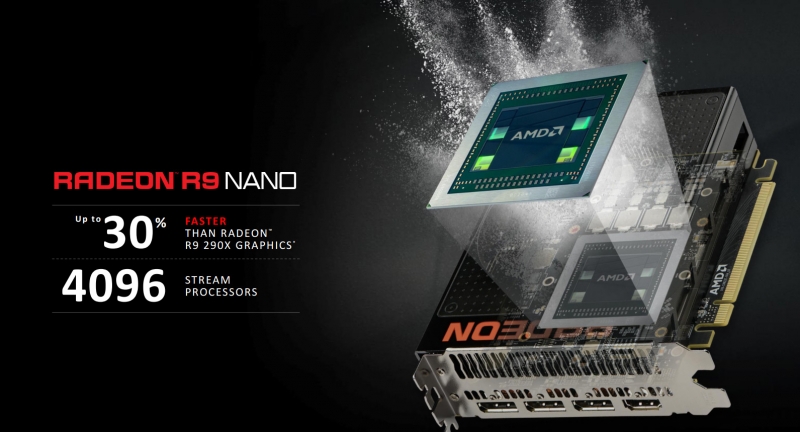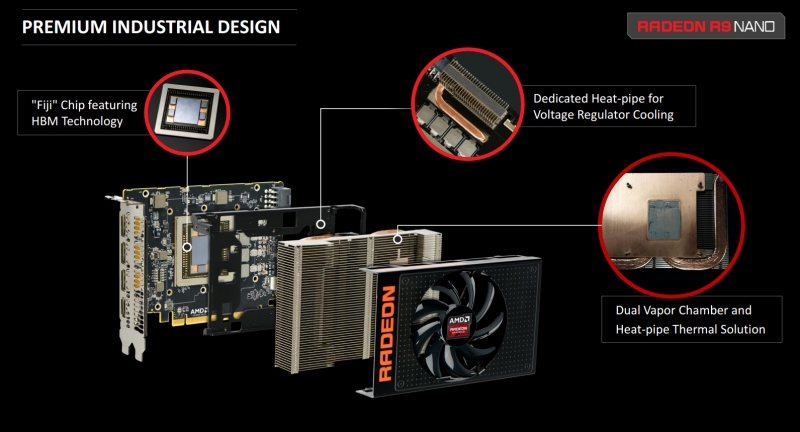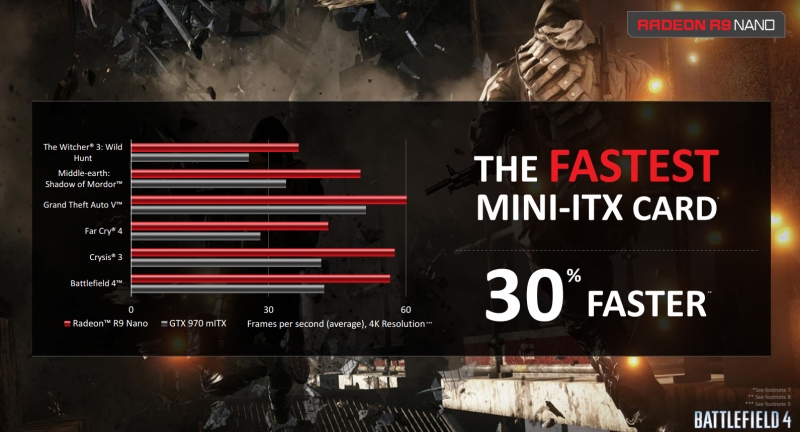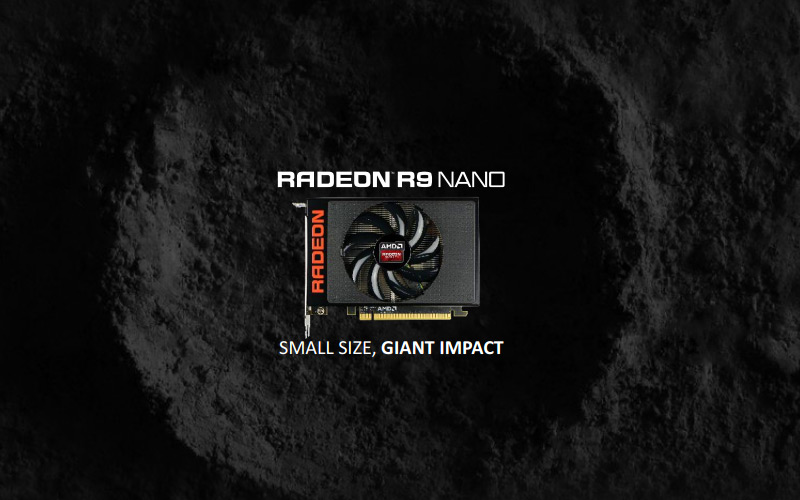AMD has officially unveiled the Radeon R9 Nano today, the company's new performance graphics card that's just six inches long. Featuring a fully-unlocked Fiji GPU, the R9 Nano might just be the perfect card for small form factor and mini-ITX gaming PCs.
Lets get the specifications of the R9 Nano out of the way first. The card features a 28nm Fiji GPU with 4,096 stream processors, the same number as the company's flagship Fury X, alongside 256 texture units and 64 ROPs. There's also 4 GB of HBM at 500 MHz, providing 512 GB/s of memory bandwidth.
The R9 Nano's core clock speed is rated as "up to 1000 MHz", with a rated TDP of 175 W, meaning the card only requires a single 8-pin PCIe power connector. In total, AMD calculates that the R9 Nano can deliver 8.19 TFLOPs of compute performance.

In AMD's press materials for the R9 Nano, the company extensively compares the new card to the Hawaii-based Radeon R9 290X. According to their data, the R9 Nano is "up to" 30% faster than the R9 290X while being 40% shorter, 20°C cooler with an operating temperature target of 75°C, 30% less power hungry, and 16 dBA quieter.
Putting all of these figures together, and AMD says the R9 Nano has 2X the performance per watt and 2X the performance density of the R9 290X. These are pretty impressive figures, but there are some critically important things to note about this card.

For starters, the R9 Nano's specs are nearly identical to that of the R9 Fury X. Same core configuration, same frame buffer size and bandwidth, and a rated maximum clock speed just 50 MHz less than the Fury X. While AMD doesn't directly compare the Nano to the Fury X in their release notes, they do list the Nano's peak performance as just slightly below that of a Fury X.
However there are some key differences between the Nano and the Fury X that make this card rather unusual. The Nano is a lot smaller than the Fury X, and doesn't feature the closed-loop water-cooler, with AMD opting instead for a dual vapor chamber and thermal piped heatsink with a single fan. This cooling solution is apparently quite effective, despite rated performance close to that of the Fury X.
Critically, the R9 Nano's TDP is 36% lower than the Fury X, yet performance is supposed to be quite close between the two cards. Unless AMD has magically been able to shave 100W off the operating power of their largest Fiji GPU, something else has changed in the Nano's design.

AMD hasn't stated specifically what they are doing in the Nano to keep power consumption so low, but there's a fairly simple explanation: the R9 Nano has been capped to run under 175W through AMD's PowerTune technology. This means that while the Fury X will run at a full 1,050 MHz core clock during workloads, the Nano will mostly sit at a much lower clock speed and core voltages.
It's not clear what the Radeon R9 Nano's clock speeds will be during most gaming workloads, but there's a possibility that we'll see clock speed spikes as high as 1,000 MHz with the card's typical frequency sitting several hundred megahertz lower.
Scott Wasson from The Tech Report also pointed out that AMD's game benchmarks using the R9 Nano are specifically geared towards loading the shader cores, rather than simulating settings gamers actually use. Every benchmark is run with no anisotropic filtering (0xAF) and minimal anti-aliasing, instead focusing on high resolutions and high shader effects.

These tests are designed to favor the huge shader core array of the R9 Nano when placed up against competitors such as the Nvidia GeForce GTX 970 and even AMD's own Radeon R9 290X. It will be interesting to see how the card performs in real-world benchmarks when we get our hands on a review sample.
The R9 Nano will go on sale on September 10th, with a retail price of $649. This places the card at the same price point as the Fury X and the GeForce GTX 980 Ti, although we expect performance to be lower than both these cards due to the power and thermal constraints of the Nano's design.
This graphics card launch is a particularly interesting one, so stay tuned for a full review of the R9 Nano in the coming weeks.
